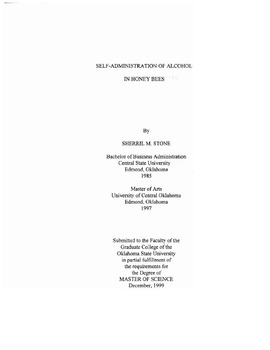| dc.description.abstract | Cicero (1979) asserted that any animal model of alcoholism should include 1) animal must voluntarily self-administer the alcohol, 2) tolerance to a:lcohoL should be demonstrated following a period of continuous consumption, 3) dependence on alcohol as demonstrated by withdrawal symptoms, and 4) the biomedical complications associated with chronic alcohol consumption seen in humans also develop in animals. Many animal models of alcoholism have been developed using, for instance, primates (Mello, 1976), mice (Rijk, Crabbe, & Rigter, 1982), and goldfish (Marcucella & Abramson, 1978). Several techniques of alcohol-induction have been tried ,to increase alcohol consumption including intracerebral injections (Cicero & Myers, 1969), sweetening of the alcohol solution (Gilbert, 1974~ Siegel & Brodie; 1984), sucrose-fading (Tolliver, Sadeghi & Samson, 1988), food deprivation (Macenski & Meisch, 1992; Pakarinen, Williams & Woods, 1999), direct stomach tube implantations (Deutsch & Eisner, 1977), and inhalation (Rijk, Crabbe & Rigter, 1982). Honey bees are an attractive model for an alcohol model. First, honey bees are inexpensive to procure and maintain as compared to other animals. Second, much is known about their history, physiology, genetics, and behavior. Third, automated and non-automated techniques exist to study various honey bee behaviors. Fourth, honey bees, like humans, are social animals and allow examination of social behaviors within a colony. Fifth, honey bee eggs are laid in cells which allow observation and video recording of larvae development. Finally, honey bees meet the self administration requirement of Cicero's (1979) development of animal models. The results of the preliminary and current experiments indicate that 1) under harnessed conditions, honey bees will readily consume 1%, 5%, 10%, and 20% a1.cohol solutions, 2) sucrose stimulation, as well as sensory bypass, elicits excitation and .consumption of 95% alcohol, 3) alcohol consumption decreases locomotion, 4) honey bees readily consume fruit juice and fruit flavored wine, and 5) honey bees will self-administer alcohol at an artificial feeder, a behavior similar to that observed by Hassan (1992). His field studies found that honey bees will consume fermented nectar containing up to 10% ethanol. However, further research is needed to determine the development of alcohol tolerance and dependence in honey bees. Additionally, the biomedical complications of self administration of alcohol in honey bees needs to be examined. The results of the studies may indicate the use of honey bees in bioassay procedures. That is, if it is found that honey bees meet all of Cicero�s (1979) requirements, honey bees may provide answers regarding the use of alcohol inhibiting drugs in humans (e.g., Antabuse and Naltrexone). | |
